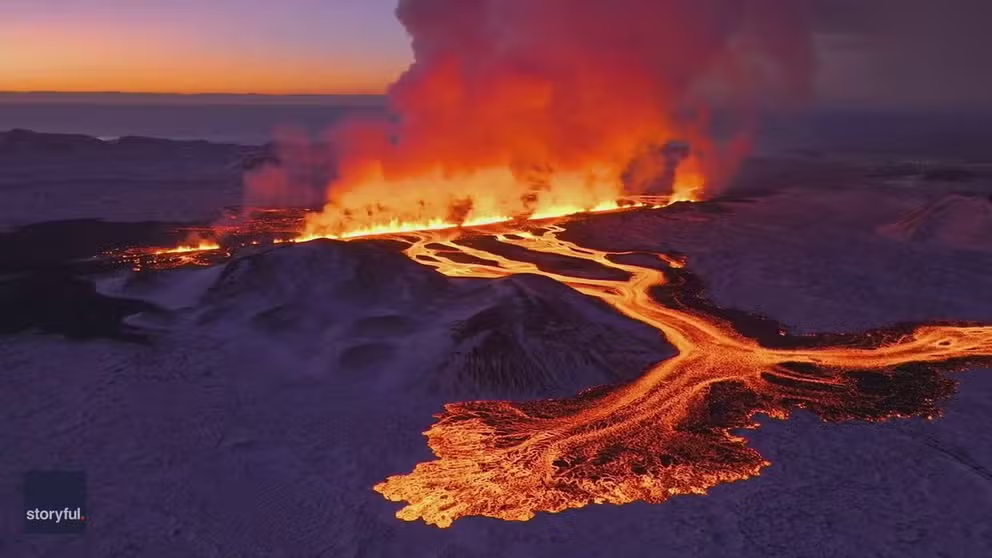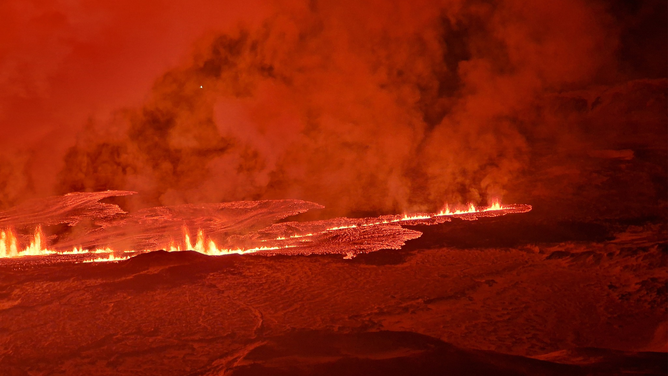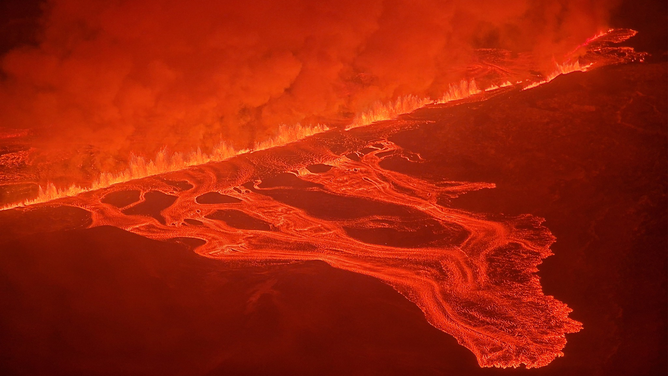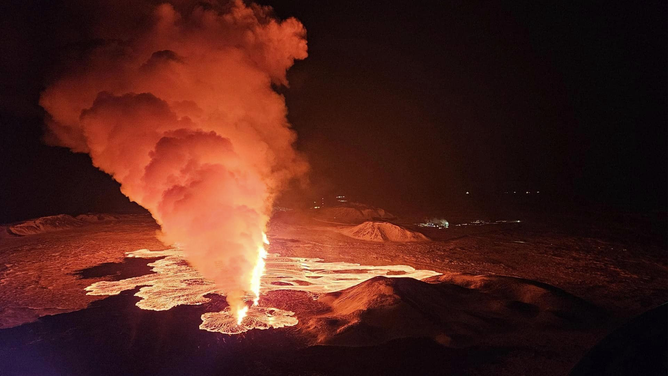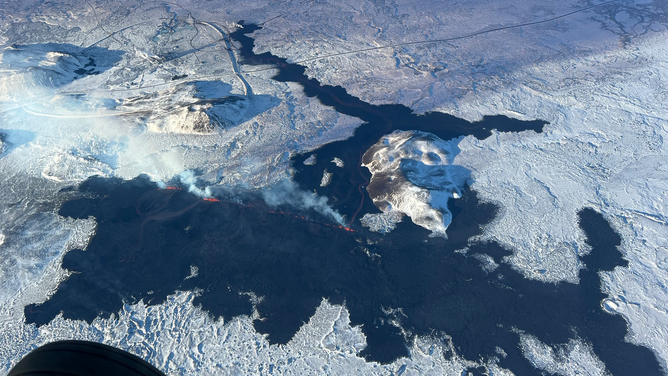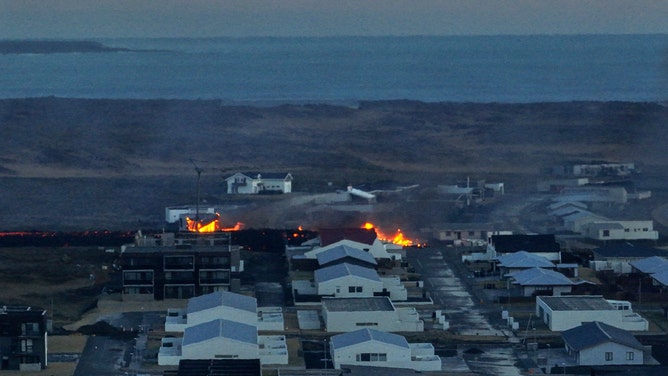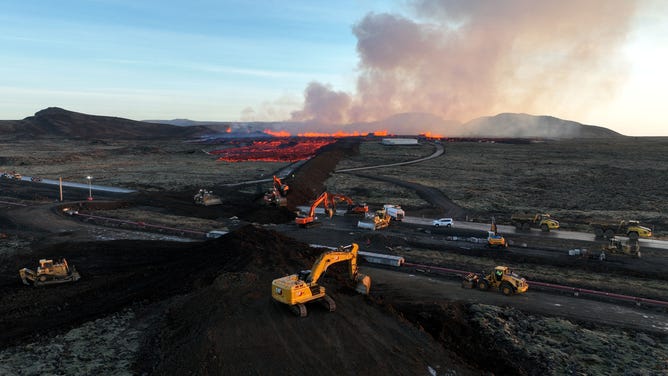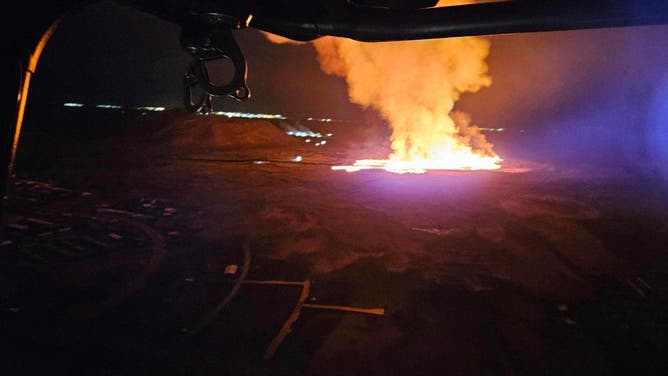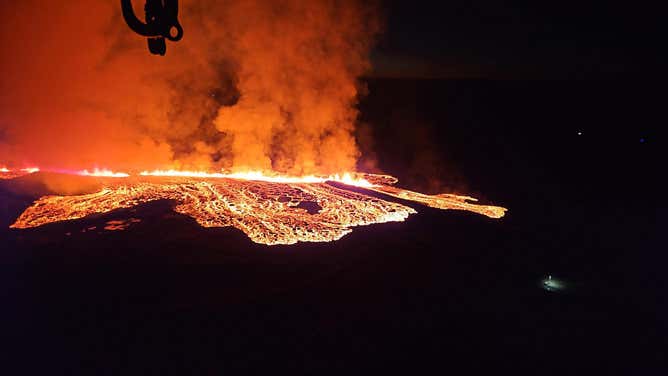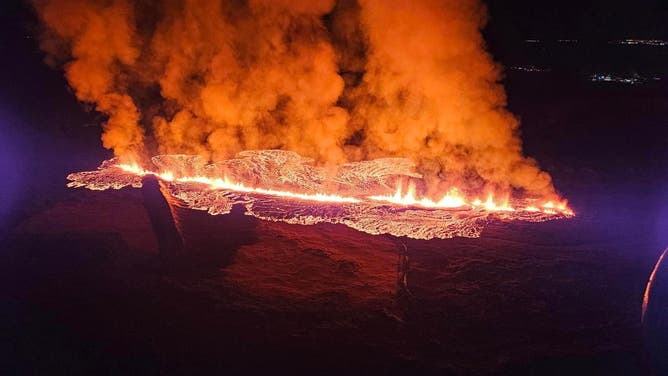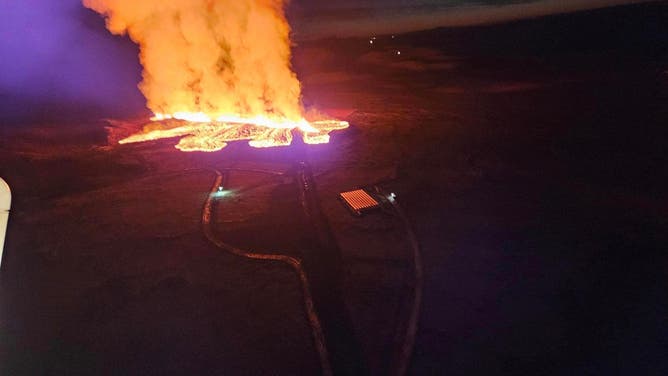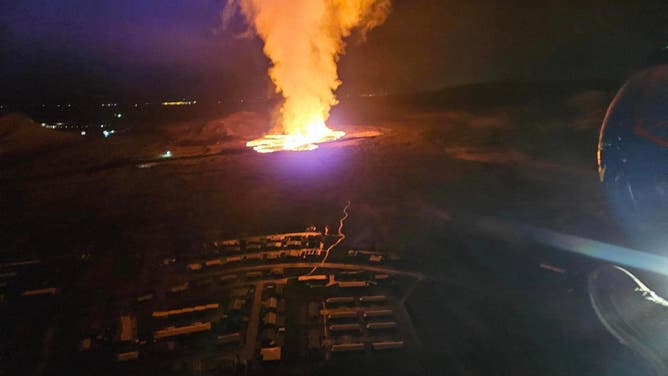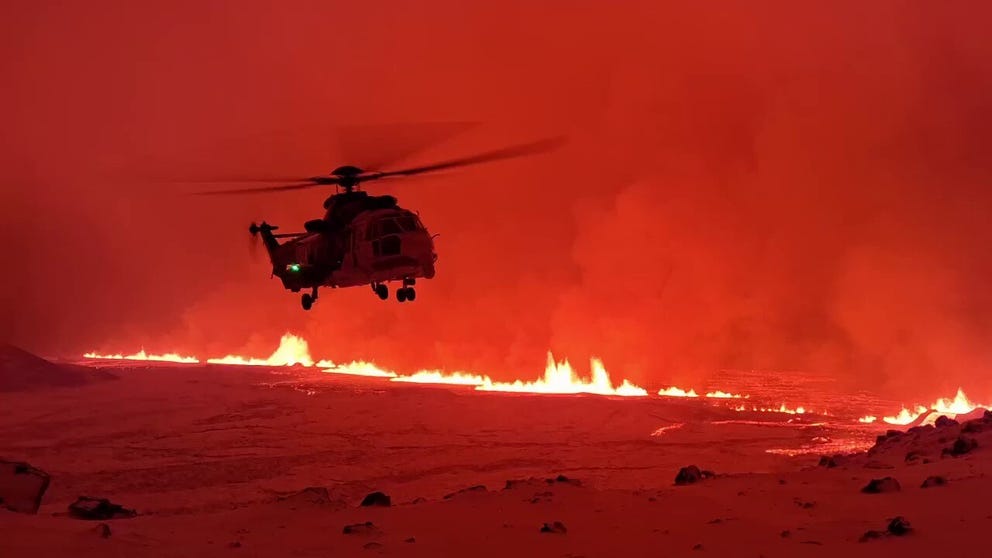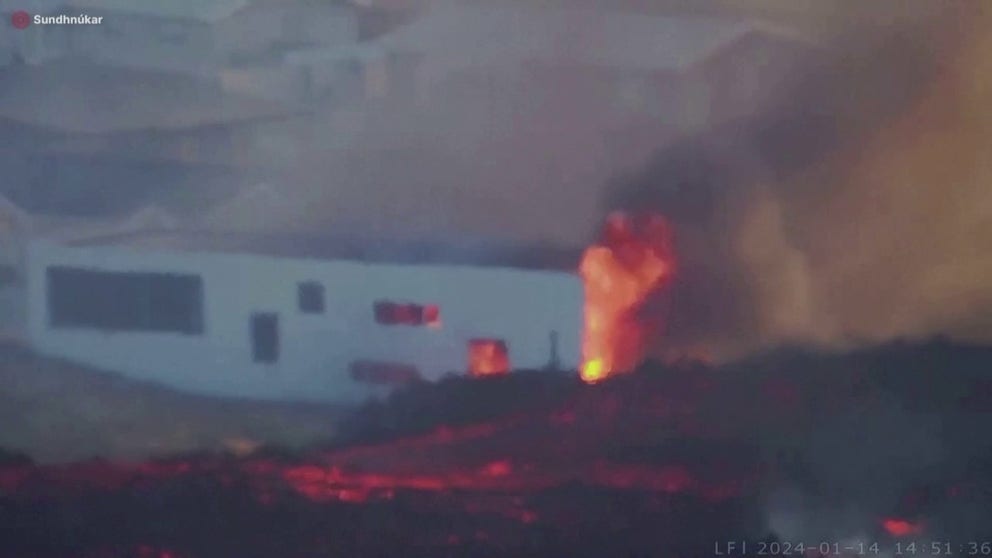Surging Iceland volcano could soon erupt again with less than 30 minutes warning, officials fear
If the volcano near Grindavík in Iceland were to erupt again, it would be the fourth time to do so since the end of 2023, with the first occurring on Dec. 18, the second on Jan. 14 and the third on Feb. 8.
Watch: Drone video provides dramatic image of volcanic eruption in Iceland
Drone video recorded in Iceland shows the power of a volcano that erupted for the third time in two months on Thursday, Feb. 8, 2024.
GRINDAVIK, Iceland - The Icelandic Meteorological Office (IMO) says magma accumulating underground again near the seaside town of Grindavík is approaching levels seen before previous volcanic eruptions and warns that another eruption could occur in the coming days "with very little warning" – perhaps even less than half an hour's notice.
If that were to occur, it would be the fourth eruption since the end of 2023, with the first occurring on Dec. 18, the second on Jan. 14 and the third on Feb. 8.
WHAT HAPPENS BEFORE A VOLCANO ERUPTS?
"Model calculations suggest that about 7.6 million cubic meters of magma has been recharged within the Svartsengi reservoir," the IMO said in a translated statement. "Considering precursors of previous volcanic eruptions in the Sundhnúkar crater row, (the) likelihood of a volcanic eruption increases once the volume reaches 8-13 million cubic meters."
The IMO said that if the accumulation of magma continued at the same rate, that lower limit would have been reached by Tuesday, Feb. 27.
CAN ONE VOLCANO'S ERUPTION TRIGGER AN ERUPTION AT ANOTHER VOLCANO?
Watch: Iceland Coast Guard gets up-close look at volcanic eruption
The Icelandic Coast Guard provided video of an up-close look at a volcano that erupted near the town of Grindavik on Monday night.
In addition to the magma accumulation, scientists say earthquake activity has also increased.
"The current seismicity is similar to that observed days before previous volcanic eruptions in the area," the IMO continued.
Because of the increased risk, hazard levels have been raised in several zones. The IMO said the hazards have also increased in Grindavík due to the possibility of lava flows if the volcano does erupt for a fourth time.
WHAT ARE THE 4 CLASSIC TYPES OF VOLCANOES?
Video shows lava destroying homes in Grindavik after volcanic eruption in Iceland
Dramatic video shows homes being destroyed by a lava flow in the town of Grindavik in Iceland after a volcano erupted early Sunday morning.
The IMO also said that a tell-tale sign of magma getting ready to breach the surface would be the sudden increase in seismic activity, with many localized, small earthquakes.
"Considering the previous volcanic eruptions in the area, an eruption could start with very little warning (less than 30 minutes), depending on where magma reaches the surface on the Sundhnúkar crater row."
Grindavík residents had been evacuated from town a few weeks before the initial eruption in December, but the decision was made days later to allow residents to briefly return to gather essential belongings and then get out.
No injuries have been reported from any of the eruptions, but some homes were destroyed by lava flows during the eruption on Jan. 14.
